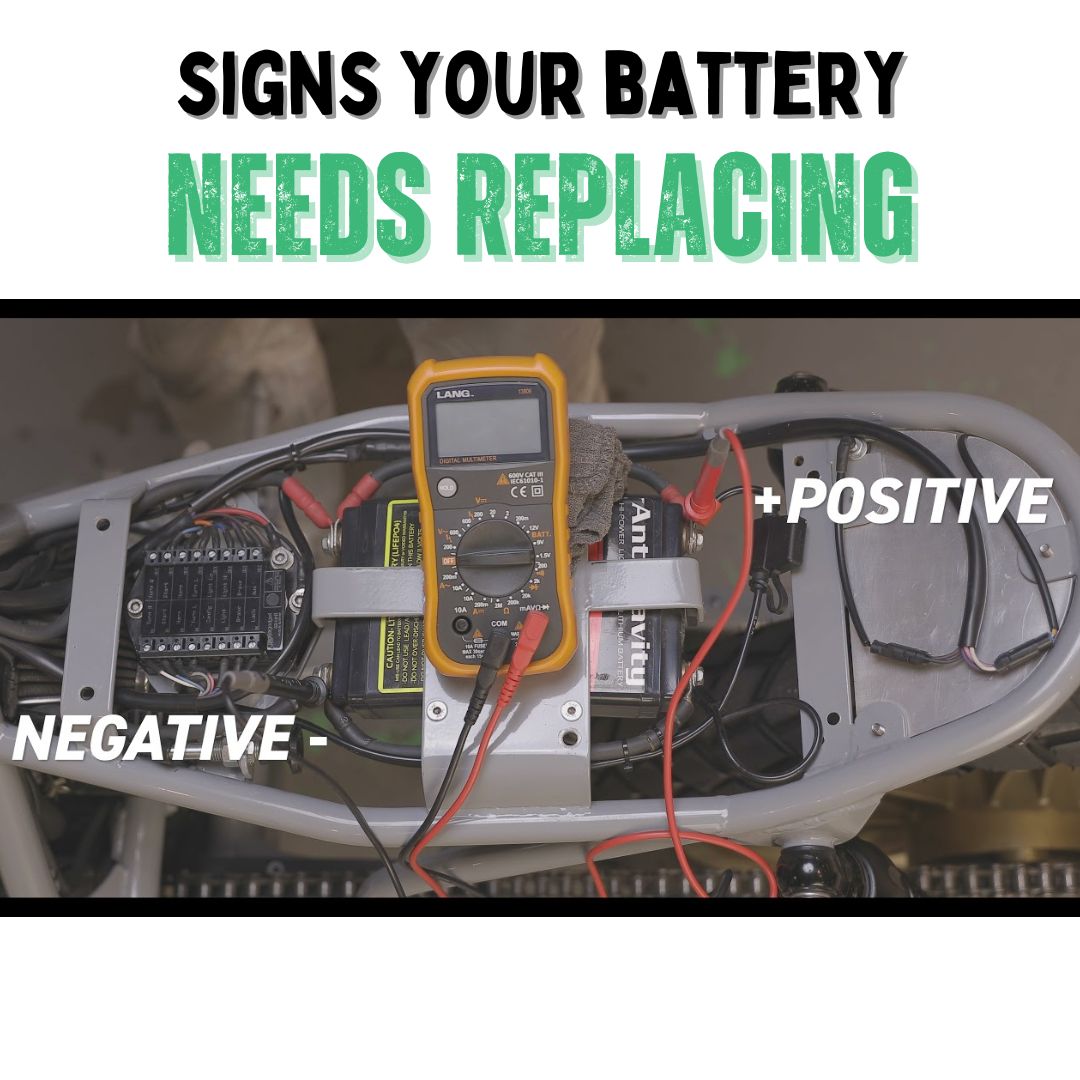
Updated: 25.4.25
Dirt biking is a thrilling experience, blending adventure with a deep sense of freedom. But what happens when your trusty steed starts showing signs of wear, particularly in its heartbeat — the battery?
In this comprehensive guide, we’ll walk through the key signs that your dirt bike battery needs replacing, ensuring your rides remain safe and exhilarating.
1. Recognising Performance Issues
A failing battery can cause a variety of motorcycle problems, affecting both performance and safety.
Dimming Headlights and Fading Horn
When your bike’s lights are dim and the horn sounds weak, it’s a clear sign the battery is struggling.
Engine Trouble - When It Won't Crank
If your engine turns over slowly or not at all, the battery could be the culprit.
2. Physical Signs of Battery Wear
Visual inspections reveal crucial clues. Corroded terminals or deformed batteries are red flags.
Visible Damage
Look for bulging, cracks, or leaks. These are not cosmetic — they indicate serious battery degradation.
3. Electrical Irregularities
Inconsistent Readings and Failures
Flickering electronics or random shutoffs can point to battery instability.
Sulfation and Charging Problems
Sulfation builds up when batteries are left uncharged for too long, reducing effectiveness.
Battery Voltage Testing
A fully charged battery reads ~12.6V off and 13.7–14.7V while running.
4. Lifespan Considerations
Premature Aging
If your battery gives up early, poor maintenance or quality might be the cause. Most last 2–5 years.
Battery Types and Longevity
| Battery Type | Expected Lifespan |
|---|---|
| Sealed AGM | 3–5 years |
| Acid-Filled | 2–5 years |
Overcharging Signs
Overcharged batteries swell, emit sulfur smells, and feel unusually hot. Check your charging system immediately if you spot these.
5. Simple Maintenance Tips
A well-maintained battery lasts longer. Here's how:
Routine Cleaning
Keep terminals clean and check for corrosion regularly.
Proper Charging and Storage
Use a battery tender for periods of inactivity. Avoid extreme heat or cold.
Right Tools Matter
Distilled water (for non-sealed batteries), terminal spray, and a voltmeter can all help.
Seasonal Adjustments
In winter, charge more often. In summer, avoid overheating.
Seek Help When Needed
If battery issues persist, consult a motorcycle technician. Better safe than stuck!
Considering an Upgrade?
Upgrading to a more powerful battery is wise for riders with high electrical demands or extreme climates. Just ensure it’s compatible.
Conclusion
Spotting battery issues early helps avoid breakdowns. Regular checks and smart care keep your dirt bike running strong.
Frequently Asked Questions
How long does a dirt bike battery typically last?
Most last 2–5 years, depending on type, usage, and maintenance habits.
What are signs of a failing battery?
Dim lights, weak horn, slow cranking, electronic failures, and visible damage.
Can I revive a sulfated battery?
Sometimes. A desulfator charger may help, but replacement is often the best solution if performance doesn’t improve.
Is it safe to ride with a bloated battery?
No. A swollen battery is dangerous and should be replaced immediately.
How do I test my battery?
Use a multimeter. Healthy voltage: 12.6V when off, 13.7–14.7V when running.
Get in Touch 🚀
Loved our guide to dirt bike battery care? We're your go-to team for all things ride-on!
Visit RiiRoo.com for more guides, or hop on Live Chat if you've got questions.






Share:
Understanding Dirt Bike Batteries
Cleaning and Maintenance of Dirt Bike Battery Terminals